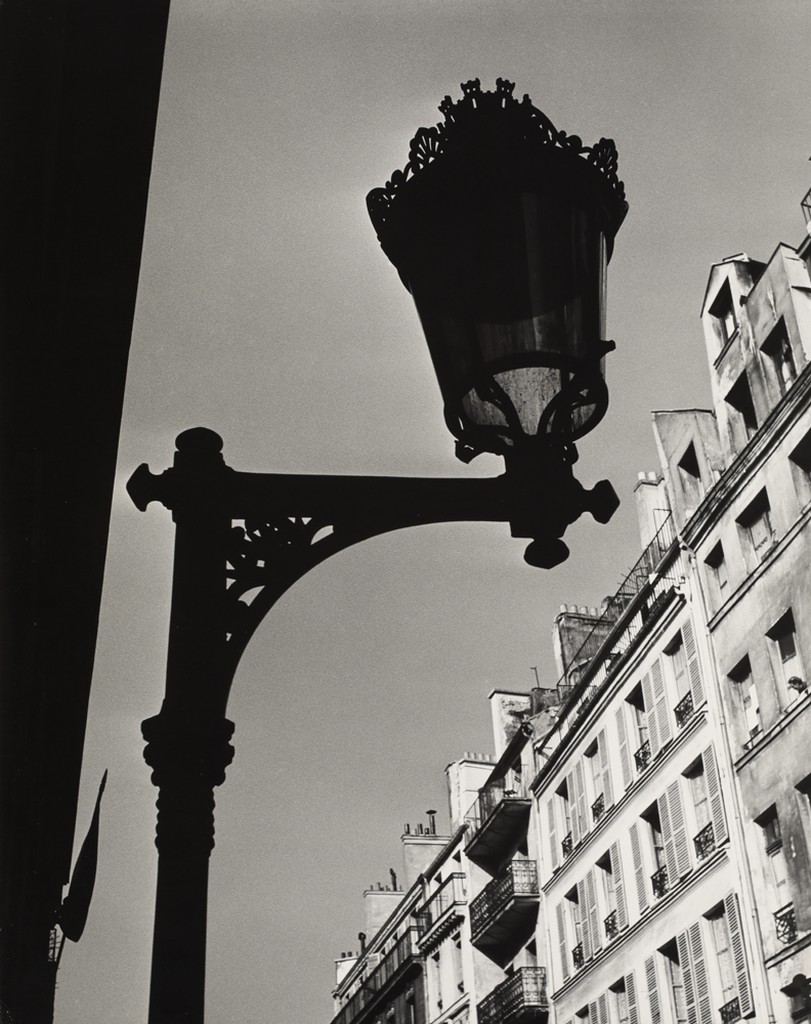Jessica Mellon
Prof. Gans
Art 121
10/22/20
Dubbed as the “Queen of the Leica” Ilse Bing was a pioneer in modern-day photography. (Hershenson, 1986) I was drawn to this particular image because I found the subject matter to be unique but beautiful. The lamppost is beautifully constructed but also a unique choice for a photograph. The way it is composed along with the building next to it is really interesting and I was drawn to the way she chose to compose her subject. As a photographer myself, I am always interested in why photographers choose to shoot what they do and what their inspiration is. What I love about Bing is that she isn’t afraid to challenge the norm and take shots of things she finds interesting. I love her ability to take a mundane subject and frame it in a way that adds value and interest. I don’t think I would have looked at the lamppost in the way that she did. I probably would have just walked by it thinking that it was a cool and unique lamppost but not stopping to take a picture of it. Her photo makes it clear that she sees creativity where others don’t and I think that it is a beautiful way to look at the world.
As the title, “Queen of the Leica” suggests, she used a 35 mm Leica camera for most of her shots. (Hershenson, 1986) Her work began with architectural photography; first as a way to capture images for her thesis at the University of Frankfurt. She then moved on to doing work for Mart Stam, a teacher at the Bauhaus school of Design, and abandoned her thesis altogether, choosing to pursue photography full time. This is where she learned and became part of the “New Photography Movement.” (“V&A · Ilse Bing – Life and Work”) In Paris, her photography continued to evolve. Here she learned from surrealists, dadaists, and neo-romantics. (Kamine, 2009)
She originally attended university to study mathematics and physics but eventually gave that up to study art history. When she became a photographer, her love of mathematics helped inform all of her work.(Kamine, 2009) She was always fascinated by geometric shapes as well as the contrast between light and dark. (“V&A · Ilse Bing – Life and Work”) I think that is especially present in this photograph of hers. The way the lamppost is positioned against the sky gives a strong contrast between the dark colors of the lamppost and the light of the sky. She uses numerous compositional elements in this photo such as the rule of thirds, angle of view, geometric shapes, and leading lines. Her background in architectural photography is clear in the picture in the unique way that the building is positioned. Her interest in geometric shapes is also quite clear in the angles and embellishments of the lamppost as well as all of the right angles of the building.
”People told us ‘photography is not an art,’ and I always answered, ‘I don’t care what you call it as long as it says something.”
(Hershenson, 1986)
The critically acclaimed artist has had works published in numerous German magazines as well as for Vogue, Harpers Bazaar, and Life. (“V&A · Ilse Bing – Life and Work”) She was also offered a job at Life magazine and her photographs have been featured in the Museum of Modern Art. (Hershenson, 1986)
This photo was donated to Lehigh by George Stephanopoulos, a news anchor, political correspondent, and avid art enthusiast. He has donated about 300 photographs to Lehigh. Lehigh University Art Gallary’s current exhibition, “Doing Democracy” is comprised of all images from the George Stephanopoulos collection. (“George Stephanopoulos”)
Bibliography
Ilse Bing, German – American, 1899 – 1998. Study of Wrought-Iron Street Lamp. 1952. Artstor, library.artstor.org/asset/28143084
Hershenson, Roberta. “CAMERA PIONEER ALUTED AT ICP.” The New York Times, The New York Times, 23 Feb. 1986, www.nytimes.com/1986/02/23/arts/camera-pioneer-aluted-at-icp.html.
“V&A · Ilse Bing – Life and Work.” Victoria and Albert Museum, www.vam.ac.uk/articles/ilse-bing-life-and-work.
Kamine, Jane. “Ilse Bing.” Jewish Women: A Comprehensive Historical Encyclopedia. 27 February 2009. Jewish Women’s Archive. (Viewed on October 22, 2020) <https://jwa.org/encyclopedia/article/bing-ilse>.
“George Stephanopoulos.” Lehigh University Giving, giving.lehigh.edu/thanks/leadershipplaza/stephanopoulos.
